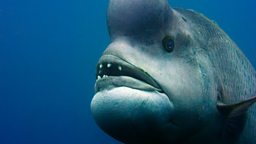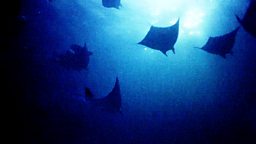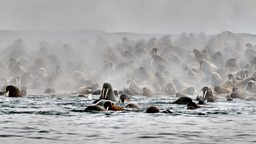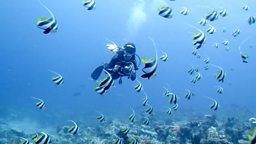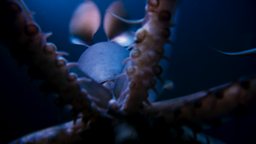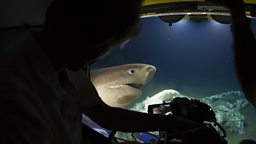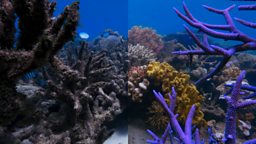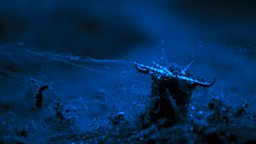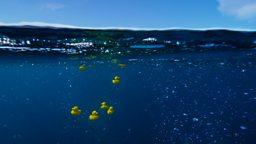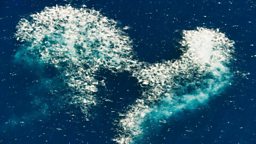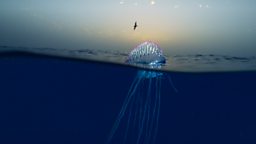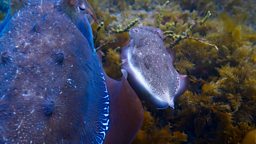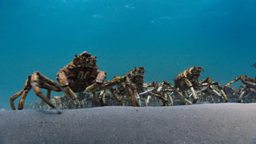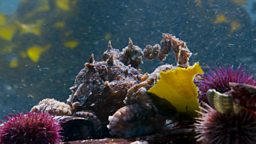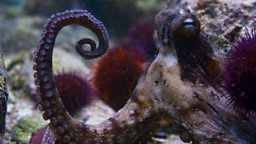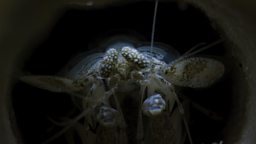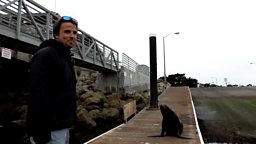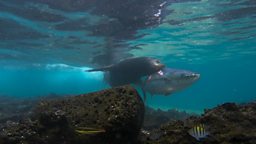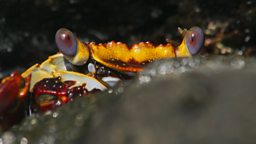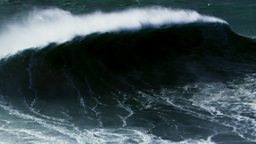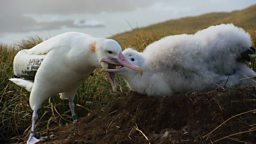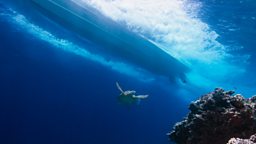Getting to know an octopus
By Craig Foster, Camera operator

I grew up in a small wooden bungalow on the Atlantic Ocean at the tip of Africa and when I was 3 years old, I started swimming in the kelp forest. This sea forest is my other home. It's where I feel safest on Earth - a place of awe and wonder, away from the suburban abyss.
After spending many years filming with San-Bushmen master trackers in the Kalahari desert of Botswana I returned to my kelp forest home and began a protocol of diving every day for a period of years - without a wetsuit. I wanted to see if my body could adapt to the cold Atlantic water and I wanted to learn to track animals underwater. In the first few years my body slowly adapted to the cold, but the tracking seemed impossible until I started watching octopuses. I began to recognise their tracks and the signs they left when they hunted and devoured prey and even more intriguing I began to see remarkable interactions with their predators – the various cat sharks that hunt the forest.
I showed some footage I had filmed to my great friend Roger Horrocks who was looking for stories for the new Blue Planet series. He was blown away by the intimate behaviours I was witnessing and later that year we began filming together, Roger shooting, as I tracked the octopus.
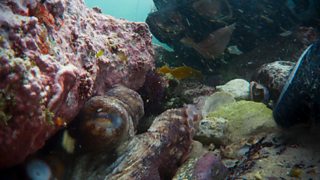
It proved tricky to get close enough to film the animals, but the relationship I had developed with one young female octopus began to pay off. Despite our massive camera setup, she realised we weren’t a threat and enchanted us with her antics. Like any underwater chameleon, she wasn’t always easy to find, but I was able to track her by following the trail of her kills and the tracks left by the scavengers that fed around her.
It was wonderful to get a glimpse into the extraordinary inner life of the octopus mind and she showed us a number of behaviours that had never been seen before.
Roger and I spent about 75 days in the kelp forest, sometimes for up to 5 hours a day, mostly waiting but eventually Roger was able to film in full her ingenious armouring technique where she used over 80 shells and stone tools to protect herself when threatened by predators. It was spectacular to witness but watching her trying to outwit a deadly catshark was terrifying for me.

Working with the vast Blue Planet team and sharing what I'd learnt from my octopus teacher was a wonderful experience for me. It was a strange feeling to know that the genius of this little wild cephalopod would be broadcast across the world to countless millions accompanied by the wonderful voice of Sir David Attenborough.
I totally fell in love with this octopus. She became a part of my family. She taught me how to track underwater, and this opened the door to the secret lives of so many other animals in the underwater forest. Through her, the sea forest of my childhood dreams has become thousands of times more vibrant and complex than any science fiction film I've ever seen.
I continue to dive everyday. My octopus teacher sadly only lived for a year and a half - full old-age for an octopus. I've already seen 5 generations of octopus come and go. I've realised that an octopus’ ability to live fast and die young, and regenerate very quickly, is what makes them one of the most resilient creatures on Earth.
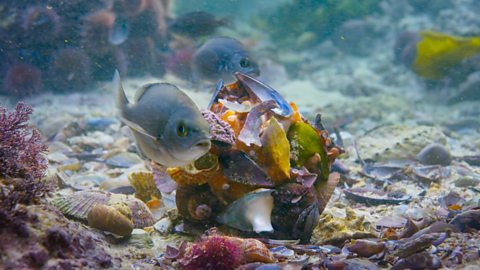
The octopus shell suit
This cunning octopus creates a protective suit of shells to hide in plain sight.

